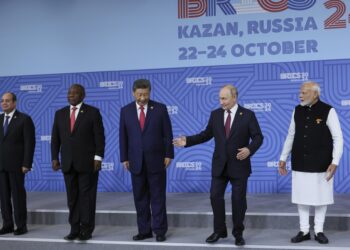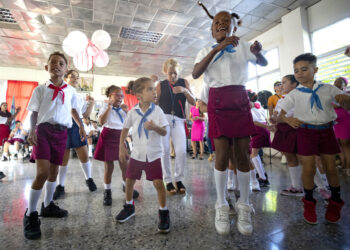The mythical Dominican salsa singer settled in New York and known as “The Canary” visited the Cuban eastern province of Santiago de Cuba from March 28 through 31, 2014, for recording some tracks and shooting two video clips along with the traditional music band Septeto Santiaguero. He is one of the most important guests of the Septet for their new album, which pays homage to the unforgettable duet “Los Compadres”, Giraldo Bravo, the new vocalist of the band, said to OnCuba.
Rita la Caimana, Oye mi Tono (duet by Eduardo “Tiburón” Morales with José Alberto “The Canary”), El Run Run and Amor Silvestre (recorded in the latest album of the Septet “Vamos pa´la Fiesta” (2012) nominated to the 2013Latin Grammy Award in the category ofBest Traditional Tropical Album) are some of the anthological songs interpreted by the famous duet of Lorenzo Hierrezuelo and Compay Segundo, this time in the voices of “The Canary” and musicians of the Septet.
José Alberto Justiniano Andújar is better known as “The Canary” for his exquisite voice and his ability to improvise and create melodies by simulating the sound of a flute while whistling. He is one of the most successful salsa singers worldwide with a 35-year long career. He has recorded more than 18 albums as soloist and more than 20 in collaboration with other artists. Sergio George, New Yorker pianist and record producer well-know for working with outstanding salsa singers, once said: The Canary is a true show man when he is on stage.
The interpreter of songs like Bailemosotravez, DiscúlpemeSeñoraandSueñoContigo, took by surprise many walkers as he came closeto the location (a narrow midtown street in Santiago) of the shooting of the video clip directed by Michel Miglis, a Swedish producer living in Cuba, because it was hard to believe that “The Canary” was the eighth man of the SeptetoSantiaguero for that night.
However, this is not his first rapprochement to Cuba or his first visit. Jose Alberto came to Cuba in 1975 as the main voice of La Típica `73, one of the leading salsa bands from New York at the time. On that occasion, he got to the top ranking lists in that city with the song “La Candela”, by Juan Formell, the director of Los Van Van.
In 1976 La Típica ´73 enhanced its musical format with musical rhythms as la guajira, cha chacháandsongo. This process is recorded in the album “Rumba Caliente” which portrays the most traditional Cuban music and includes a version of the classic song by the Aragon band, “Pare Cochero”.
Two years after the success of that album, La Típica ´73 became the first New Yorker band to travel to Cuba to perform in Havana. Besides, it recorded at the EGREEM studios the famous album “Típica 73 in Cuba – Cultural Interchange”(Fania 542), which was released the following year.
Outstanding Cuban musicians took part in this record; some of them were:Félix Chapotín, Guillermo Barreto, Tata Güines, José Luis “Changuito” Quintana, Richard Egües and “El Niño” Rivera.José Alberto “The Canary” was the main voice of the album.
For these reasons, his visit to Santiago de Cuba should not be taken as surprise, taking into account that internationallyrenowned artists have visited this city, also known as the cradle of son and trova, to exchange their music with ours and to acknowledge the legitimacy of our music. Andy Montañez, the Great Combo of Puerto Rico,Oscar D´ León and even the former Beatle Sir Paul McCartney, just to mention a few, have stopped by the Casa de la Trova in Santiago for drinking, not only a good mojito, but from the ancestral spirit of the Cuban son.
By: Guillermo Salas García










